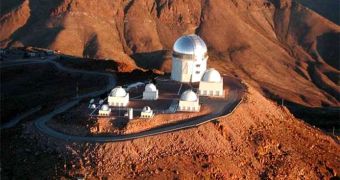The search for dark energy is about to get real, experts say. Later this years, a team of astronomers and astrophysicists will begin the Dark Energy Survey, one of the largest endeavors to find the elusive stuff ever undertaken.
The study will be conducted using the advanced, 570-megapixel Dark Energy Camera, which is bound to give experts an edge over all other studies conducted on this issue. The reason dark energy is important is that it may be the force pulling our Universe apart.
Studies have demonstrated that the Cosmos is expanding at an accelerated pace, which is not possible under the normal laws of physics. Dark energy is a concept that was proposed to solve this mystery.
If researchers manage to find it, then this would validate a large number of interrelated astronomical theories. If dark energy is not found eventually, then astronomers will need to get back to the drawing boards, and find another way to explain the Universe.
The Dark Energy Camera (DEC) was designed specifically to make the hunt for the elusive force a lot easier. The instrument is to be mounted on a 4-meter (158-inch) telescope, located at the Inter-American Observatory (IAO), in Chile.
This facility is operated by the US National Science Foundation at Cerro Tololo, where atmospheric conditions are nearly perfect for observations. The amount of precipitations that fall at this location are negligible, Space reports.
One of the main goals in the DEC study is to analyze a large number of galaxies, in a bid to determine how they are flying away from each other. Dark energy is believed to be the force behind this.
As the Universe expands ever-faster, the galaxies it contains tend to increase their distance from each other. This is the general rule, with the exception being the galaxies that are flowing towards clusters and superclusters under the pull of gravity and dark matter lanes.
“The camera is now undergoing final tests on a specially built telescope simulator at Fermilab,” said Brenna Flaugher on January 11, at the 217th winter meeting of the American Astronomical Society (AAS 2011), held in Seattle.
The expert is the project manager for the Dark Energy Camera at the Department of Energy's (DOE) Fermi National Accelerator Laboratory (Fermilab), in Batavia, Illinois. She explains that the survey will most likely last for about 5 years.
During this time, the DEC will image 300 million galaxies, 100,000 clusters and 4,000 supernovae, contained in 5,000 square degrees of sky. This surface is one eight of the entire Universe.
“The DES combination of survey area and depth will far surpass what has come before,” concluded Fermilab researcher Josh Frieman,” who is also the directors of the Dark Energy Survey.

 14 DAY TRIAL //
14 DAY TRIAL //